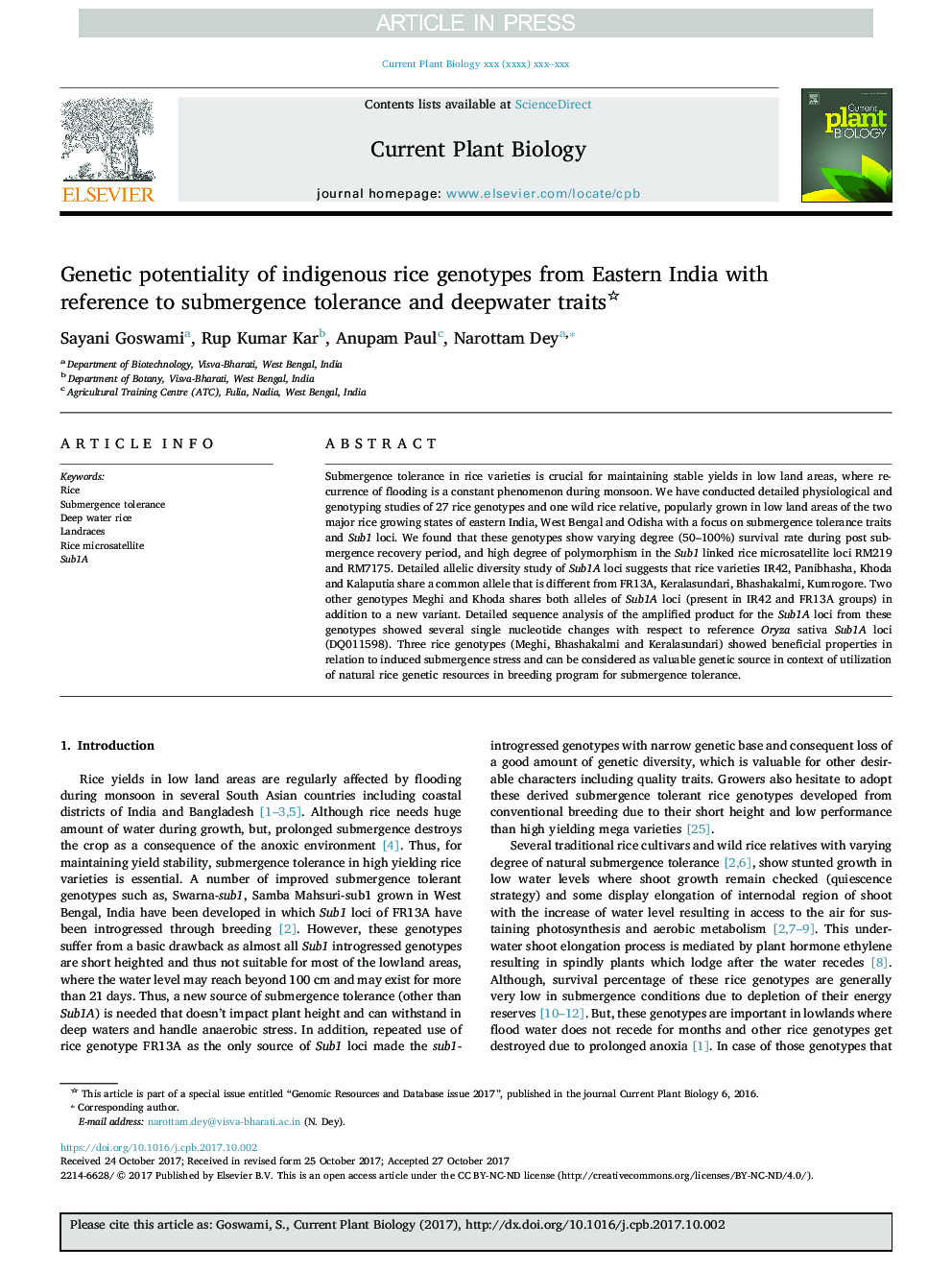| Article ID | Journal | Published Year | Pages | File Type |
|---|---|---|---|---|
| 6964982 | Current Plant Biology | 2017 | 10 Pages |
Abstract
Submergence tolerance in rice varieties is crucial for maintaining stable yields in low land areas, where recurrence of flooding is a constant phenomenon during monsoon. We have conducted detailed physiological and genotyping studies of 27 rice genotypes and one wild rice relative, popularly grown in low land areas of the two major rice growing states of eastern India, West Bengal and Odisha with a focus on submergence tolerance traits and Sub1 loci. We found that these genotypes show varying degree (50-100%) survival rate during post submergence recovery period, and high degree of polymorphism in the Sub1 linked rice microsatellite loci RM219 and RM7175. Detailed allelic diversity study of Sub1A loci suggests that rice varieties IR42, Panibhasha, Khoda and Kalaputia share a common allele that is different from FR13A, Keralasundari, Bhashakalmi, Kumrogore. Two other genotypes Meghi and Khoda shares both alleles of Sub1A loci (present in IR42 and FR13A groups) in addition to a new variant. Detailed sequence analysis of the amplified product for the Sub1A loci from these genotypes showed several single nucleotide changes with respect to reference Oryza sativa Sub1A loci (DQ011598). Three rice genotypes (Meghi, Bhashakalmi and Keralasundari) showed beneficial properties in relation to induced submergence stress and can be considered as valuable genetic source in context of utilization of natural rice genetic resources in breeding program for submergence tolerance.
Keywords
Related Topics
Physical Sciences and Engineering
Chemical Engineering
Bioengineering
Authors
Sayani Goswami, Rup Kumar Kar, Anupam Paul, Narottam Dey,
